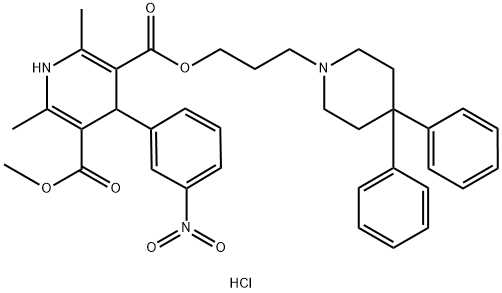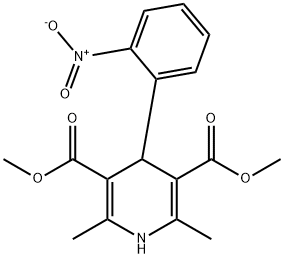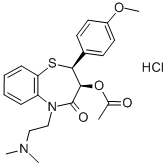N-(2-(2-(4-chlorophenyl)thiazol-4-yl)ethyl)butyraMide
- CAS NO.:932986-18-0
- Empirical Formula: C15H17ClN2OS
- Molecular Weight: 308.83
- MDL number: MFCD08009374
- SAFETY DATA SHEET (SDS)
- Update Date: 2024-11-08 20:21:46

What is N-(2-(2-(4-chlorophenyl)thiazol-4-yl)ethyl)butyraMide?
Description
The unfolded protein response (UPR) maintains balance between protein synthesis and endoplasmic reticulum (ER) protein-folding by inhibiting translation to decrease global protein synthesis, increasing degradation and disposal of unfolded protein intermediates from the ER, and increasing the folding capacity of the ER by expanding its volume and increasing chaperone synthesis. Chronic ER stress leads to a defective UPR and is strongly associated with neurodegenerative diseases, cancers, and metabolic syndrome. Azoramide is a small molecule that has been shown to improve ER protein-folding ability by dose-dependently (1-25 μM) activating reporter genes whose expression is driven by the cellular UPR response element and the ER stress response element. At 1-25 μM, this compound can also stimulate the expression of multiple chaperone proteins to enhance ER chaperone capacity and induce phosphorylation of eukaryotic translation initiation factor 2α subunit (eIF2α) to reduce protein synthesis. At 150 mg/kg, azoramide exerts antidiabetic activity in both ob/ob and diet-induced obese mice, improving insulin sensitivity and glucose homeostasis, as well as protecting pancreatic β cells against ER stress.
The Uses of N-(2-(2-(4-chlorophenyl)thiazol-4-yl)ethyl)butyraMide
Azoramide improves endoplasmic reticulum (ER) protein-folding ability and activates ER chaperone capacity to protect cells against ER stress in multiple systems. It also showed antidiabetic activity by improving insulin sensitivity and pancreatic β cell function.
References
1) Fu?(2015), Phenotypic assays identify azoramide as a small-molecule modulator of the unfolded protein response with antidiabetic activity; Sci. Transl. Med., 7?292ra98
Properties of N-(2-(2-(4-chlorophenyl)thiazol-4-yl)ethyl)butyraMide
| Melting point: | 90-93°C |
| Density | 1.215 |
| storage temp. | -20°C |
| solubility | Soluble in DMSO (up to at least 25 mg/ml) or in ethanol (up to at least 25 mg/ml) |
| form | solid |
| color | Off-white |
| Stability: | Stable for 1 year from date of purchase as supplied. Solutions in DMSO or ethanol may be stored at -20°C for up to 3 months. |
Safety information for N-(2-(2-(4-chlorophenyl)thiazol-4-yl)ethyl)butyraMide
| Signal word | Warning |
| Pictogram(s) |
 Exclamation Mark Irritant GHS07 |
| GHS Hazard Statements |
H315:Skin corrosion/irritation H319:Serious eye damage/eye irritation H335:Specific target organ toxicity, single exposure;Respiratory tract irritation |
| Precautionary Statement Codes |
P261:Avoid breathing dust/fume/gas/mist/vapours/spray. P305+P351+P338:IF IN EYES: Rinse cautiously with water for several minutes. Remove contact lenses, if present and easy to do. Continuerinsing. |
Computed Descriptors for N-(2-(2-(4-chlorophenyl)thiazol-4-yl)ethyl)butyraMide
New Products
4-AMINO-TETRAHYDRO-PYRAN-4-CARBOXYLIC ACID HCL 4-Aminotetrahydropyran-4-carbonitrile Hydrochloride (R)-3-Aminobutanenitrile Hydrochloride 1,4-Dioxa-8-azaspiro[4.5]decane 5-Bromo-2-nitropyridine 4-(Dimethylamino)tetrahydro-2H-pyran-4-carbonitrile SODIUM AAS SOLUTION ZINC AAS SOLUTION BUFFER SOLUTION PH 10.0(BORATE) GOOCH CRUCIBLE SINTERED AQUANIL 5 BERYLLIUM AAS SOLUTION Methylcobalamin (vitamin B12) SODIUM METHYL PARABEN Diclofenac Sodium SODIUM VALPROATE Racecadotril XANTHAN GUM 5-Fluoro-2-iodo-3-methylphenol 4-(Cyanomethyl)-1-piperidineacetamide 6-Bromo-2-iodo-4-methyl-3-pyridinamine 5-Amino-3-bromo-2-chlorobenzeneacetic acid 1-Bromo-3-(bromomethyl)-2-chloro-5-nitrobenzene 1,1-Dimethylethyl N-[4-(3-hydroxy-1-pyrrolidinyl)cyclohexyl]carbamateRelated products of tetrahydrofuran
You may like
-
 N-(2-(2-(4-Chlorophenyl)thiazol-4-yl)ethyl)butyramide 95% CAS 932986-18-0View Details
N-(2-(2-(4-Chlorophenyl)thiazol-4-yl)ethyl)butyramide 95% CAS 932986-18-0View Details
932986-18-0 -
 Azoramide CAS 932986-18-0View Details
Azoramide CAS 932986-18-0View Details
932986-18-0 -
 2-Chloro-5-(iodomethyl)pyrimidine 2268818-88-6 98%View Details
2-Chloro-5-(iodomethyl)pyrimidine 2268818-88-6 98%View Details
2268818-88-6 -
 2092793-98-9 98%View Details
2092793-98-9 98%View Details
2092793-98-9 -
 1360944-55-3 7-Methoxy-1H-indol-5-amine 98%View Details
1360944-55-3 7-Methoxy-1H-indol-5-amine 98%View Details
1360944-55-3 -
 2090480-14-9 98%View Details
2090480-14-9 98%View Details
2090480-14-9 -
![1-Methyl 2-bromo-5-[(1-carboxy-1-methylethyl)amino]benzoate 1651844-56-2 98%](https://img.chemicalbook.in//Content/image/CP5.jpg) 1-Methyl 2-bromo-5-[(1-carboxy-1-methylethyl)amino]benzoate 1651844-56-2 98%View Details
1-Methyl 2-bromo-5-[(1-carboxy-1-methylethyl)amino]benzoate 1651844-56-2 98%View Details
1651844-56-2 -
 176445-77-5 4-(Dimethylamino)tetrahydro-2H-pyran-4-carbonitrile 98+View Details
176445-77-5 4-(Dimethylamino)tetrahydro-2H-pyran-4-carbonitrile 98+View Details
176445-77-5





